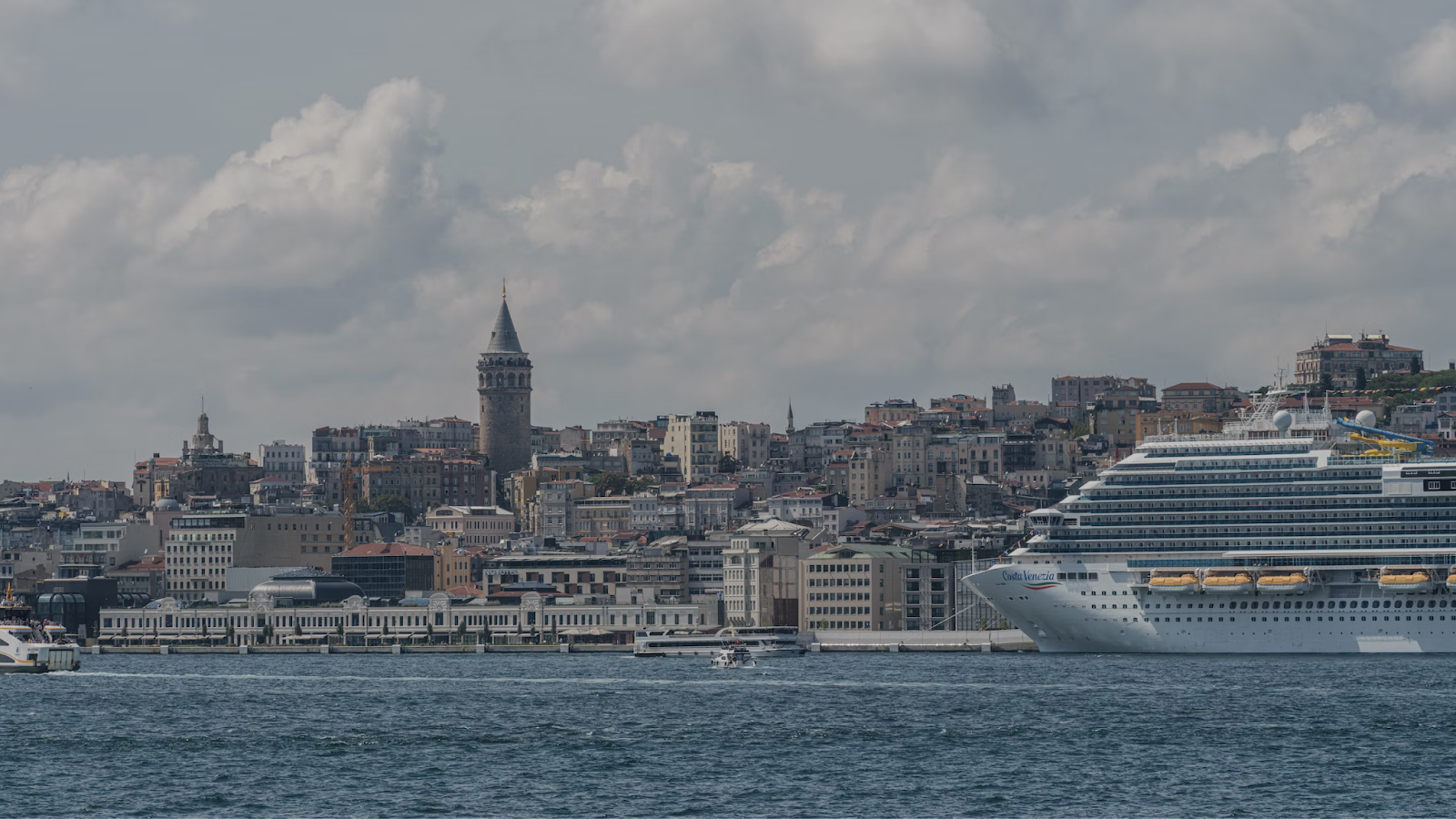Gone are the days when cruises were just floating hotels with a limited shelf life. Today, we’re sailing into uncharted waters with a new breed of residential ships, the next big wave in the cruise industry. These aren’t your grandparents’ cruise lines; they are floating communities designed for the long haul. In this post, we’ll explore how residential ships are not just changing the face of the cruise industry but also setting a new standard for sustainable, experiential, and luxurious global travel.
But first, let’s take a look at what got us here…
A Brief History of Cruise Ships
The cruise line industry has seen numerous innovations and transformations over the years, thanks in large part to its key players. Cruise industry revenue has significantly grown over the last 60-odd years as cruise packages became the hassle-free form of travel.
- Norwegian Cruise Lines: Norwegian Cruise Line Holdings was founded in 1966, when the first cruise ship broke away from cruise traditions by introducing “Freestyle Cruising,” where set dining times and formal attire were no longer obligatory.
- Royal Caribbean International: established in 1968, Royal Caribbean Cruises raised the bar for onboard experiences with features like surfing and skydiving simulators on some of the world’s largest ships, such as the Symphony of the Seas.
- Carnival Cruise Line: The Carnival Corporation came into existence in 1972 and gained immense popularity for its “Fun Ships,” targeting a broad demographic with a focus on lively entertainment.
- Holland America Line: Founded in 1873, Holland’s passenger ships are one of the oldest cruise lines, known for their commitment to service, dining, and an overall elegant cruising experience.
- American Cruise Lines: founded in 1991, offers luxury river cruises within the United States.
- Princess Cruises: originating in 1965, became a household name through the 1970s TV show “The Love Boat” and is well-regarded for its luxurious voyages to exotic destinations.
- MSC Cruises: The hallmark of European elegance entered the cruise market in 1987 with an emphasis on luxury and sustainable cruise liners.
- Star Cruises: The cruise company was founded in 1993, and specializes in serving the growing Asian market with itineraries featuring multiple Asian ports.
- Disney Magic Cruise Line: launched in 1998, quickly gained ground for its family cruises centered around Disney characters and themes and ocean cruises with its own private island.
Each of these main players has contributed uniquely to the wide-ranging appeal of cruising, making it an industry that truly offers something for everyone. The most appealing aspect of cruise travel is the ease with which you can see multiple destinations without the logistics associated with land-based and air travel. As they say, all you have to do is unpack your bags, and the rest is taken care of.
However, it appears these pleasure voyages have become too popular for their own good, with problems arising at the shore.
The Day Tripper Problem for Cruise Passengers
The surge in popularity of cruise tourism comes with its own set of challenges, particularly the “day tripper” issue affecting the busiest cruise ports around the world. These are travelers who arrive on cruise ships and only stay for a day or less, often overwhelming local resources without contributing much to the local economy. As many of these popular destinations witness tourism returning to pre-pandemic levels, where they experienced some respite, locals and government are rethinking the tourism sector, especially for cruise ship passengers.
Cities like Venice have been particularly hard-hit, as droves of tourists disembark from large cruise ships, congesting already narrow lanes and putting a strain on the city’s delicate infrastructure. The problem is that most cruise lines only stay for hours, making for a rushed visit and not spending much money.
In response to this, cruise industry news reports several ports are considering limiting the number of cruise ships that can dock each day. This measure aims to balance tourism income with the preservation of local heritage and environment. Furthermore, some cities have gone beyond mere limitations.
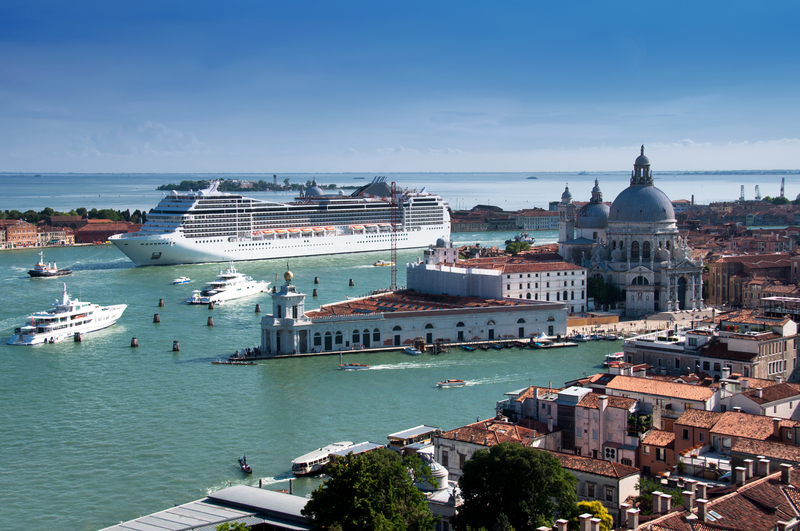
Back to Venice, for instance, it has announced plans for a tourist fee, including for cruise passengers, and is restricting the movement of large ships in its canals. Such steps are becoming increasingly necessary to manage the sheer volume of visitors while ensuring the sustainability and quality of life for local communities.
The “day tripper” problem forces a reevaluation of how the cruise industry operates, emphasizing the need for responsible tourism that benefits both travelers and host communities. It’s a growing concern that’s sparking a conversation among cruise companies, cruise line operators, cruise executives, local governments, and tourists themselves.
New Breed of Cruise Ship
So, how will the modern cruise industry react to this seemingly growing trend of limiting global cruise lines and passenger numbers from entering their port cities? It’s still too early to tell how cruise operators will counteract, but some luxury cruise lines are taking a different approach. However, these are not your average cruise ship – these residential ships are designed for living or voyaging long term.
Demand for longer voyages
The demand for longer voyages has been around for quite some time, with 100+ day around-the-world voyages selling out fast. Such extended cruises appeal to a demographic looking for more than just a quick escape; they’re seeking a comprehensive travel experience while circling the globe. This trend is compelling for those who have the time and resources to invest in such a journey, offering a nuanced, extensive exploration that typical one-week cruises simply can’t provide.
Then, to take it a step further, more reports are coming out of people living on a cruise ship using cruise hopping. whereby they book continuous back-to-back cruises. Many of these cruise hoppers proclaim that it is a more affordable way to live than it is back home. Some retirees claim it to be way cheaper than a retirement home, and they get to see the world. Fair enough.
The rise of the residential ship
Now, there are new players in the industry looking to capitalize on this growing trend for longer voyages and living at sea. The first, and currently only at sea, was MS The World. Launched in 2002, MS The World (pictured) offers a unique, long-term residential experience at sea, allowing its residents to travel the globe without leaving the comforts of home. Owned collectively by its residents, the ship provides a variety of luxurious amenities and world-class services, from fine dining to spa facilities.
Over the years, MS The World has set new standards for oceanic living, visiting hundreds of ports across different continents and providing a unique, ever-changing backdrop for its community of explorers.
Storylines MV Narrative
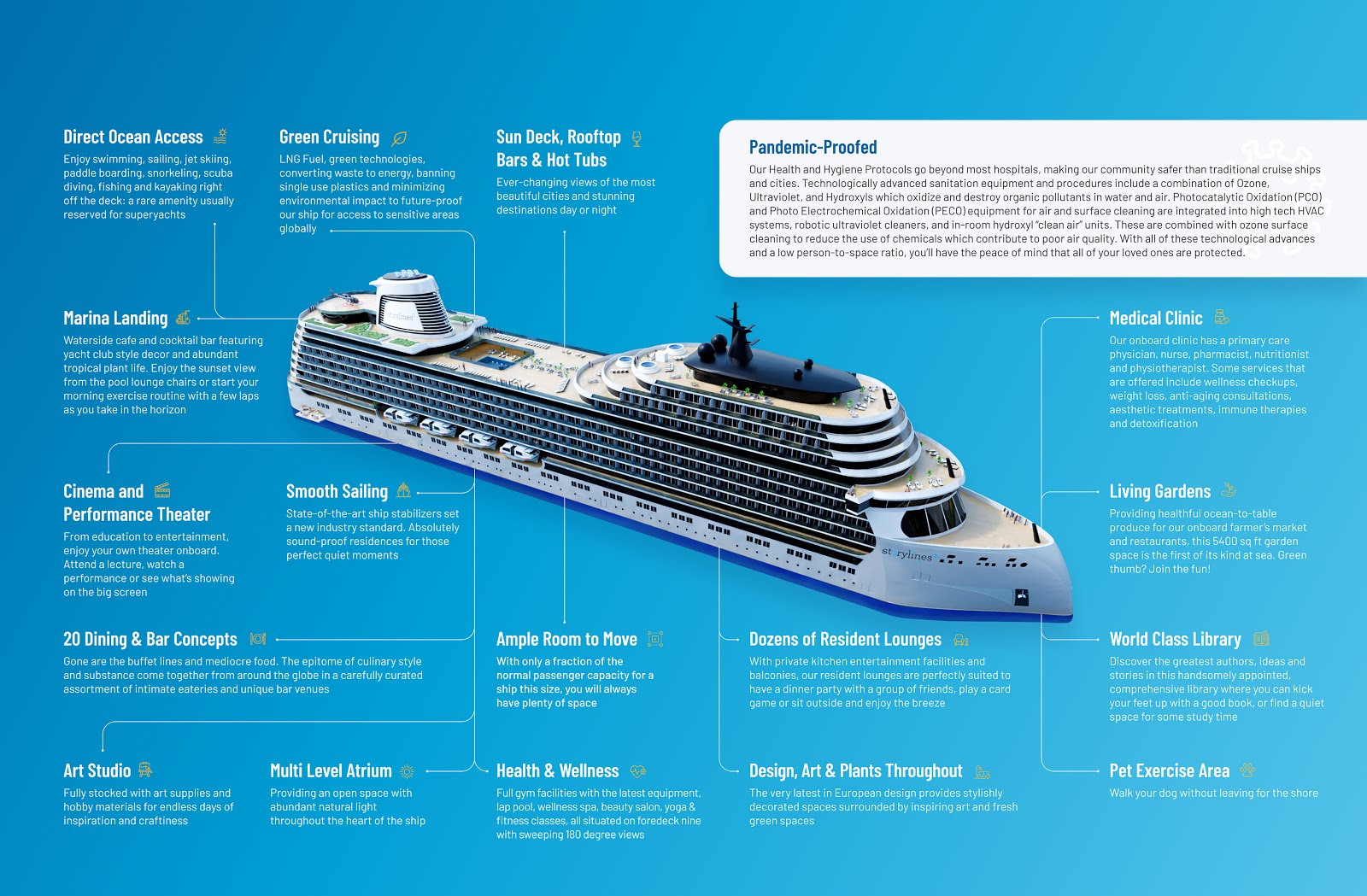
The latest ship on the block, Storylines MV Narrative, is taking the concept of living at sea to a whole new level. The luxury residential ship is building a community of global citizens aiming to leave the world in a better place than where they found it. The ship’s amenities include everything you might find in your local town or suburb, including coworking spaces, conference rooms and high-speed satellite internet for those residents working remotely.
But what’s most impressive is MV Narrative’s continuous voyage offers an alternative to the brief stops associated with “day tripper” cruising. This allows travelers to immerse themselves more deeply in diverse cultures and locales, offering more to the local communities that they visit.
Here are some ways in which Storylines cruise lines operate differently from your typical cruise ships:
Slow travel
- Circumnavigating the globe every 1000 days
- Staying in regions for up to 3 months, i.e. the South Pacific
- Staying in port for up to five days
- Use of anchoring and zodiacs so as not to congest ports
- Ability to sail off the beaten path
Sustainable travel and responsible tourism
- Use liquified natural gas (LNG) the most eco-friendly for powering ships
- Embracing experiential travel and immersion travel
- Contribution through volunteering and philanthropy
- Worldschooling children on board
Shared purchase options
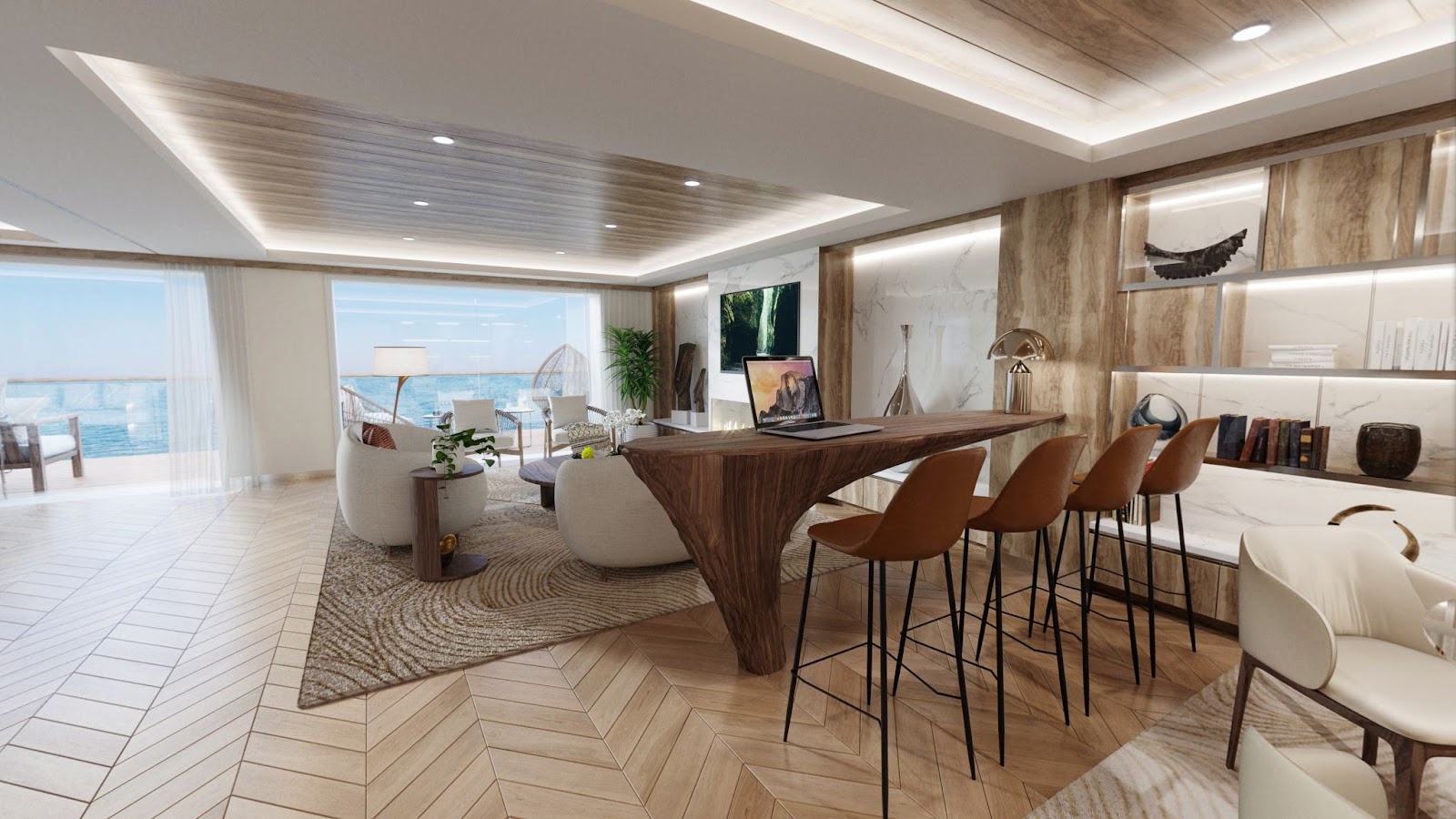
For those who crave the lifestyle yet do not desire to live on the ship full-time or cannot afford a lease for the lifetime of the vessel, Storylines offers a select number of units for shared purchase. This option allows you to purchase a 25% share, or a three-month season, of the home onboard. This means that you have a holiday home to vacation in a different part of the world every year. One year, the Mediterranean, the next, the Caribbean. Yes, please!
The future of the global cruise industry
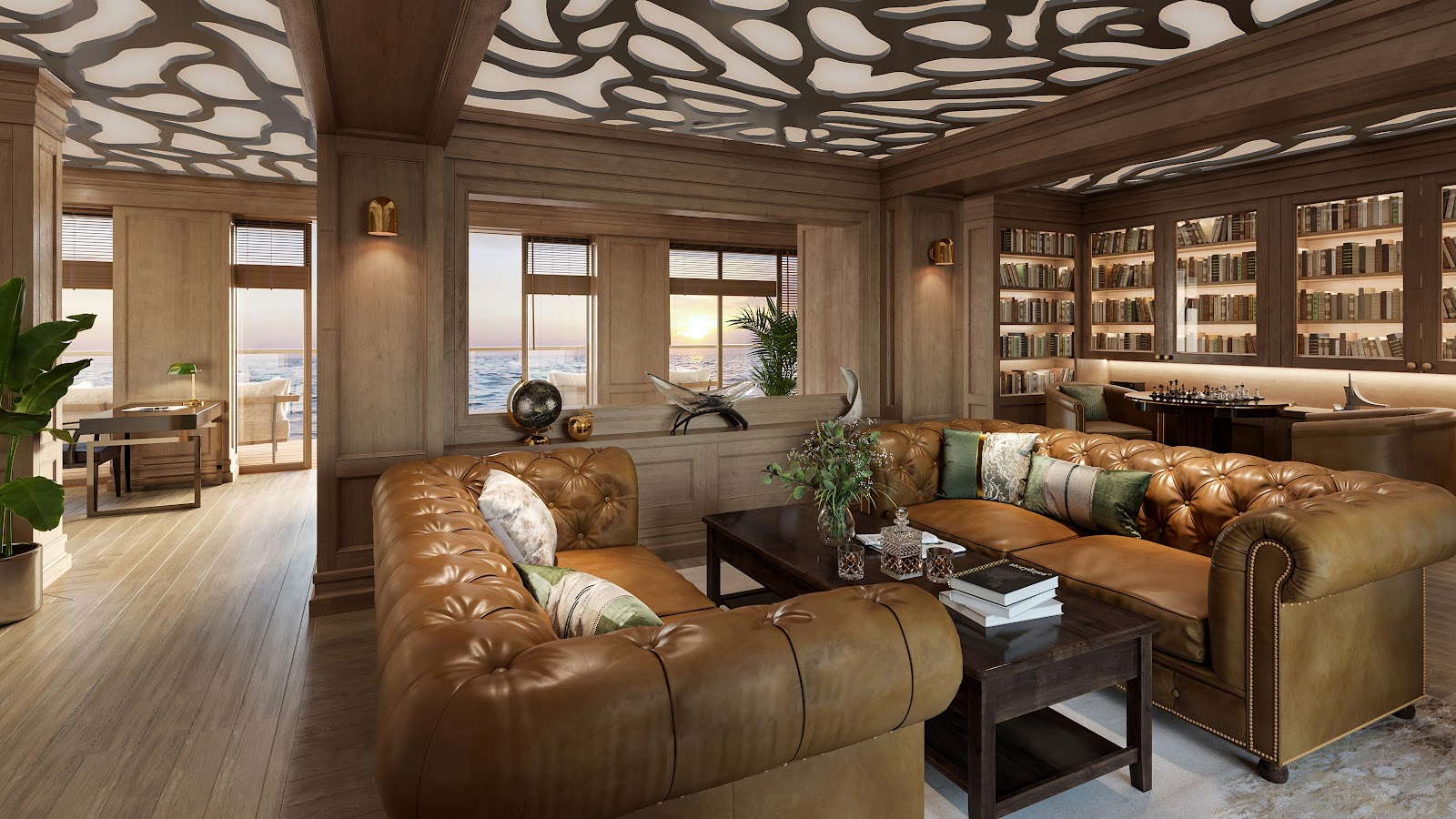
As the cruise industry navigates the changing tides of tourism and environmental responsibility, the concept of “slow travel” embodied by residential ships like MS The World and MV Narrative, may offer a blueprint for the future. The day-tripper issue has prompted many ports and cities to reconsider the sustainability of short-term visits, and in doing so, created a window of opportunity for the cruise industry to reimagine its offerings.
Adopting a slow-travel approach could allow cruise lines to focus on longer, more immersive experiences that not only reduce the footprint at each port but also offer a richer, more fulfilling experience to travelers. By doing so, they could address the sustainability issues facing popular destinations while meeting the growing demand for more responsible tourism. Whether it’s around-the-world cruises or integrating residential units, the industry is at a crossroads, with the potential to significantly alter how we think about travel, community, and our relationship with the world.

